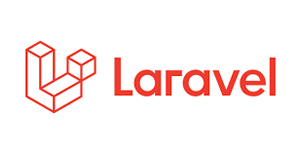-
Notifications
You must be signed in to change notification settings - Fork 97
Laravel Framework
This guide helps you get through the confusion of implementing Shieldon Firewall on your Laravel application. These tips are not the only way to make it, but also gives you some ideas.
The following steps have been tested on Laravel 5 and 6.
Use PHP Composer:
composer require shieldon/shieldonThis will also install dependencies built for Shieldon:
- shieldon/psr-http The PSR-7, 15, 17 Implementation with full documented and well tested.
- shieldon/event-dispatcher The simplest event dispatcher.
- shieldon/web-security The collection of functions about web security.
- shieldon/messenger The collection of modules of sending message to third-party API or service, such as Telegram, Line, RocketChat, Slack, SendGrid, MailGun and more...
You can use Shieldon as a middleware or implement Shieldon on the bootstrap stage of your web application.
Initialize Shieldon in the bootstrap stage of your application, mostly in just right after Composer autoloader has been included. I personally prefer this way because that there are fewer steps and to avoid possible conflicts with Laravel's built-in functions.
In your bootstrap/app.php, after <?php, add the following code.
/*
|--------------------------------------------------------------------------
| Run The Shieldon Firewall
|--------------------------------------------------------------------------
|
| Shieldon Firewall will watch all HTTP requests coming to your website.
| Running Shieldon Firewall before initializing Laravel will avoid possible
| conflicts with Laravel's built-in functions.
*/
if (isset($_SERVER['REQUEST_URI'])) {
// This directory must be writable.
// We put it in the `storage/shieldon_firewall` directory.
$storage = __DIR__ . '/../storage/shieldon_firewall';
$firewall = new \Shieldon\Firewall\Firewall();
$firewall->configure($storage);
// The base url for the control panel.
$firewall->controlPanel('/firewall/panel/');
$response = $firewall->run();
if ($response->getStatusCode() !== 200) {
$httpResolver = new \Shieldon\Firewall\HttpResolver();
$httpResolver($response);
}
}Route::any('/firewall/panel/{path?}', function() {
$panel = new \Shieldon\Firewall\Panel();
$panel->csrf(['_token' => csrf_token()]);
$panel->entry();
})->where('path', '(.*)');If you adopt this way, Shieldon Firewall will run in Global scope. But no worry, you can set up the exclusion list for the URLs you want Shieldon Firewall ignore them.
You can define a middleware by yourself or use intergration class.
If you choose to use intergation class, skip step 1 and go to step 2-2.
Define a middleware named ShieldonFirewall
php artisan make:middleware ShieldonFirewallAdd several lines in the ShieldonFirewall middleware class, the content will look like below.
<?php
namespace App\Http\Middleware;
use Closure;
class ShieldonFirewall
{
/**
* Handle an incoming request.
*
* @param \Illuminate\Http\Request $request
* @param \Closure $next
* @return mixed
*/
public function handle($request, Closure $next)
{
$firewall = new \Shieldon\Firewall\Firewall();
// The directory in where Shieldon Firewall will place its files.
$storage = storage_path('shieldon_firewall');;
$firewall->configure($storage);
// Base URL for control panel.
$firewall->controlPanel('/firewall/panel/');
$firewall->getKernel()->setCaptcha(
new Csrf([
'name' => '_token',
'value' => csrf_token(),
])
);
$response = $firewall->run();
if ($response->getStatusCode() !== 200) {
$httpResolver = new \Shieldon\Firewall\HttpResolver();
$httpResolver($response);
}
return $next($request);
}
}Modify app/Http/Kernel.php and add this line in $routeMiddleware property.
2-1
'firewall' => \App\Http\Middleware\ShieldonFirewall::class,If you use intergation class, the code will look like this:
2-2
'firewall' => \Shieldon\Firewall\Integration\Laravel::class,We need a controller to get into the controll panel of Shieldon firewall.
Route::any('/firewall/panel/{path?}', function() {
$panel = new \Shieldon\Firewall\Panel();
$panel->csrf(['_token' => csrf_token()]);
$panel->entry();
})->where('path', '(.*)');Shieldon Firewall will start watching your website if it get enabled in Deamon setting section.
Assign firewall middleware to any route you would like to protect. For example:
Route::any('/', function () {
return view('welcome');
})->middleware('firewall');That's it.
You can access the control panel by entering /firewall/panel/.
https://for.example.com//firewall/panel/The default login is shieldon_user and password is shieldon_pass. After logging in the Firewall Panel, the first thing you need to do is to change the login and password.
Shieldon Firewall will start watching your website if it get enabled in Deamon setting section, make sure you have set up the settings correctly.
- Author: Terry L. from Taiwan.
- Website: shieldon.io
- GitHub repository: github.com/terrylinooo/shieldon
- WordPress plugin: wordpress.org/plugins/wp-shieldon/
Docs: Laravel, Symfony, CodeIgniter, CakePHP, Yii, Zend, Slim, Fat-Free, Fuel, PHPixie


